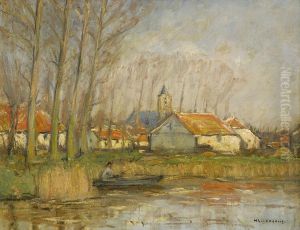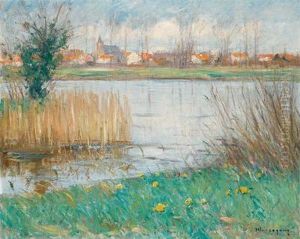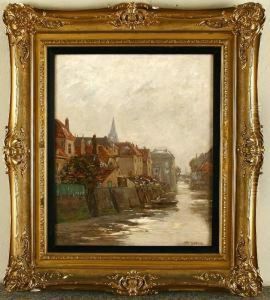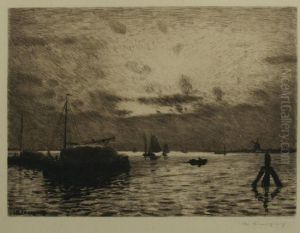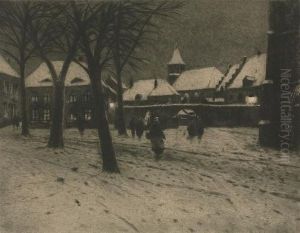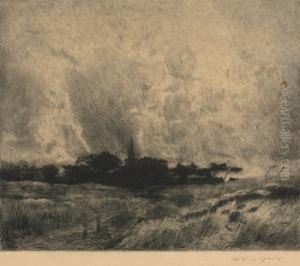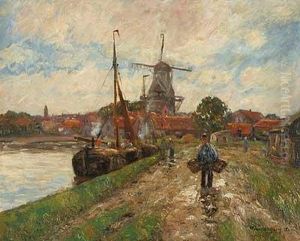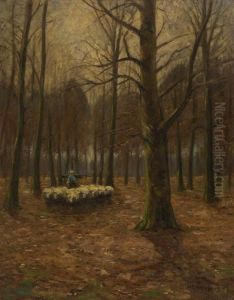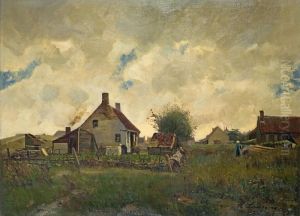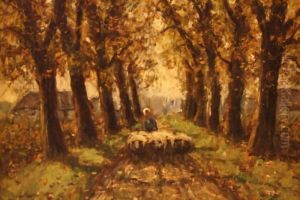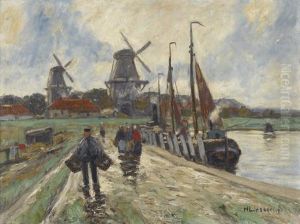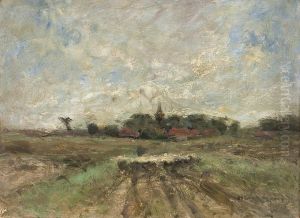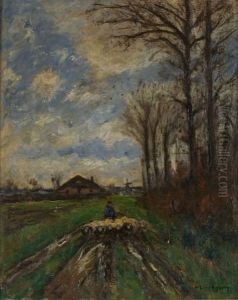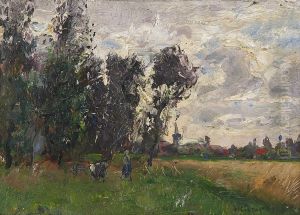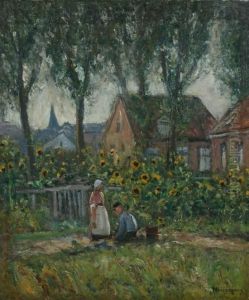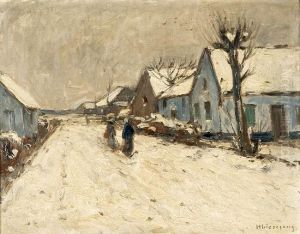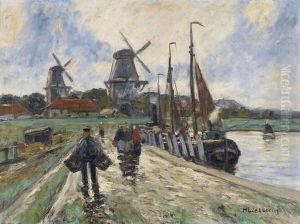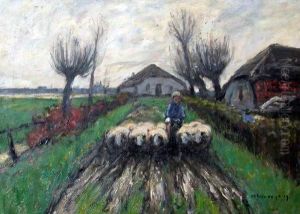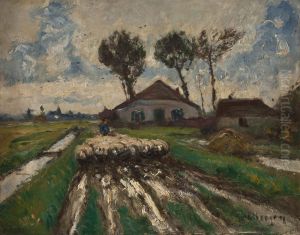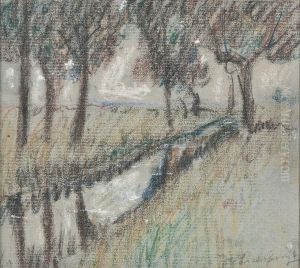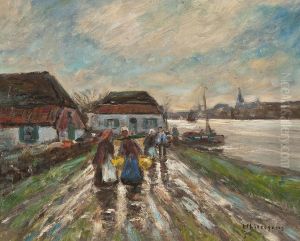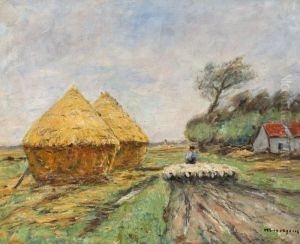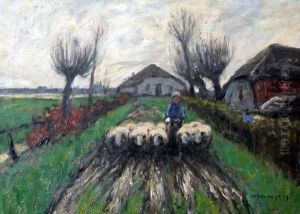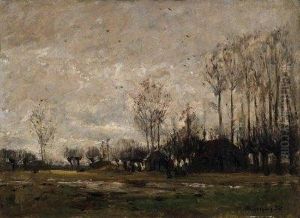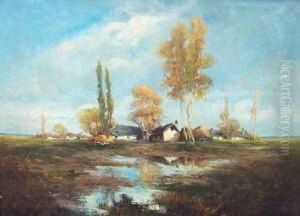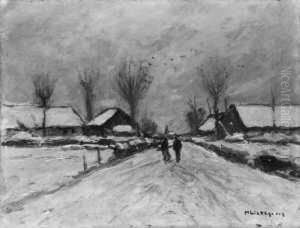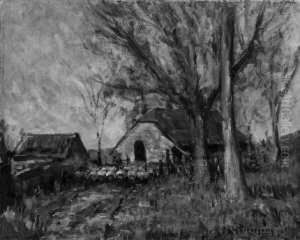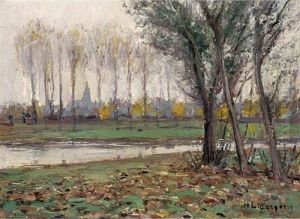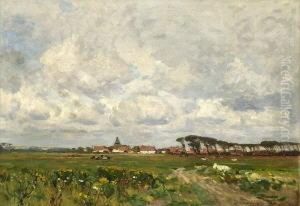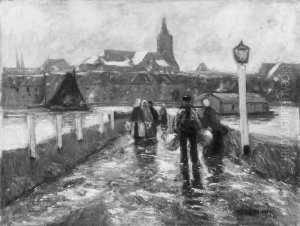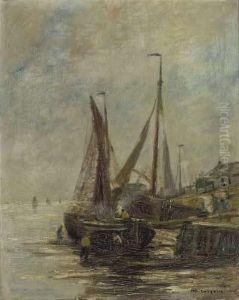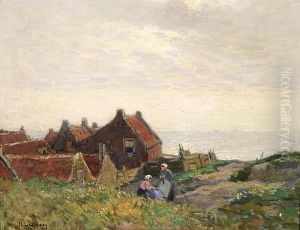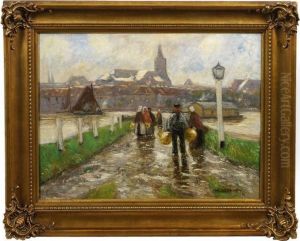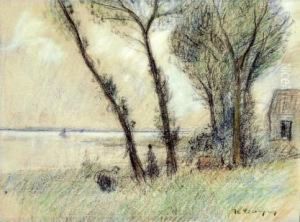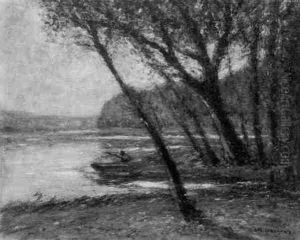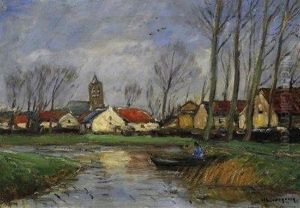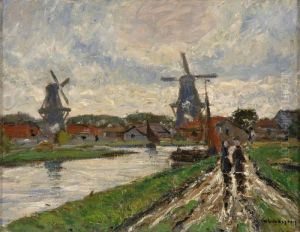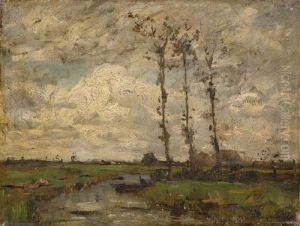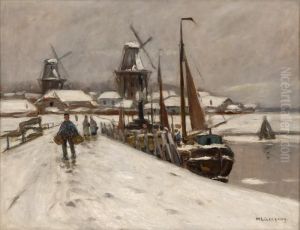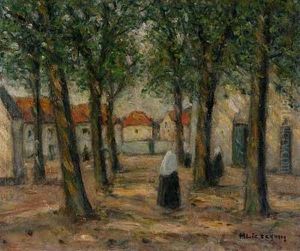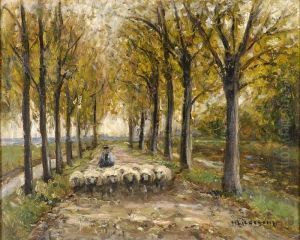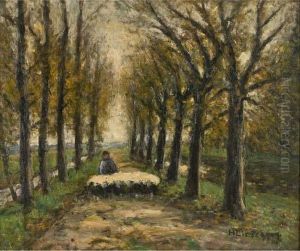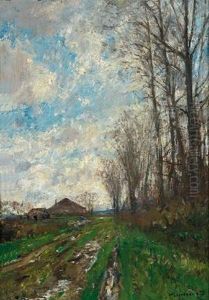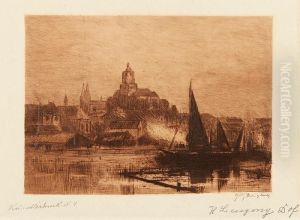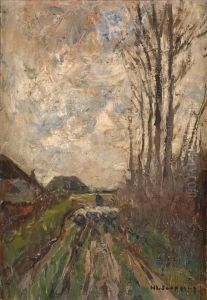Helmut Liesegang Paintings
Helmut Liesegang was a German landscape painter and etcher, born on May 14, 1858, in Düsseldorf, Germany. He is known for his atmospheric landscapes which often depict the Rhine River and its surroundings. His work is characterized by a detailed and realistic portrayal of nature, which was influenced by the Düsseldorf school of painting, a group that emphasized careful observation and depiction of nature.
Liesegang received his artistic training at the Düsseldorf Academy of Arts, where he studied under the landscape painter Eugen Dücker. Dücker was a proponent of plein air painting, which involves painting outside to capture the true effects of light and atmosphere, and this approach had a significant impact on Liesegang's later work.
Throughout his career, Liesegang remained dedicated to landscape painting, although he also explored etching as a medium. His etchings are particularly noted for their fine detail and his ability to capture the texture and mood of his subjects.
Liesegang's paintings often evoke a sense of tranquility and are marked by their subtle use of color and light. He was adept at depicting different times of day and various weather conditions, which added to the emotional depth of his landscapes.
During his lifetime, Liesegang was a respected member of the Düsseldorf artists' community and exhibited his work widely. He also served as a professor at the Düsseldorf Academy of Arts, where he influenced a new generation of landscape painters.
Helmut Liesegang passed away on December 4, 1945, in Düsseldorf. Today, his work continues to be appreciated for its contribution to the landscape genre, and his paintings can be found in various art collections and museums in Germany and beyond.
